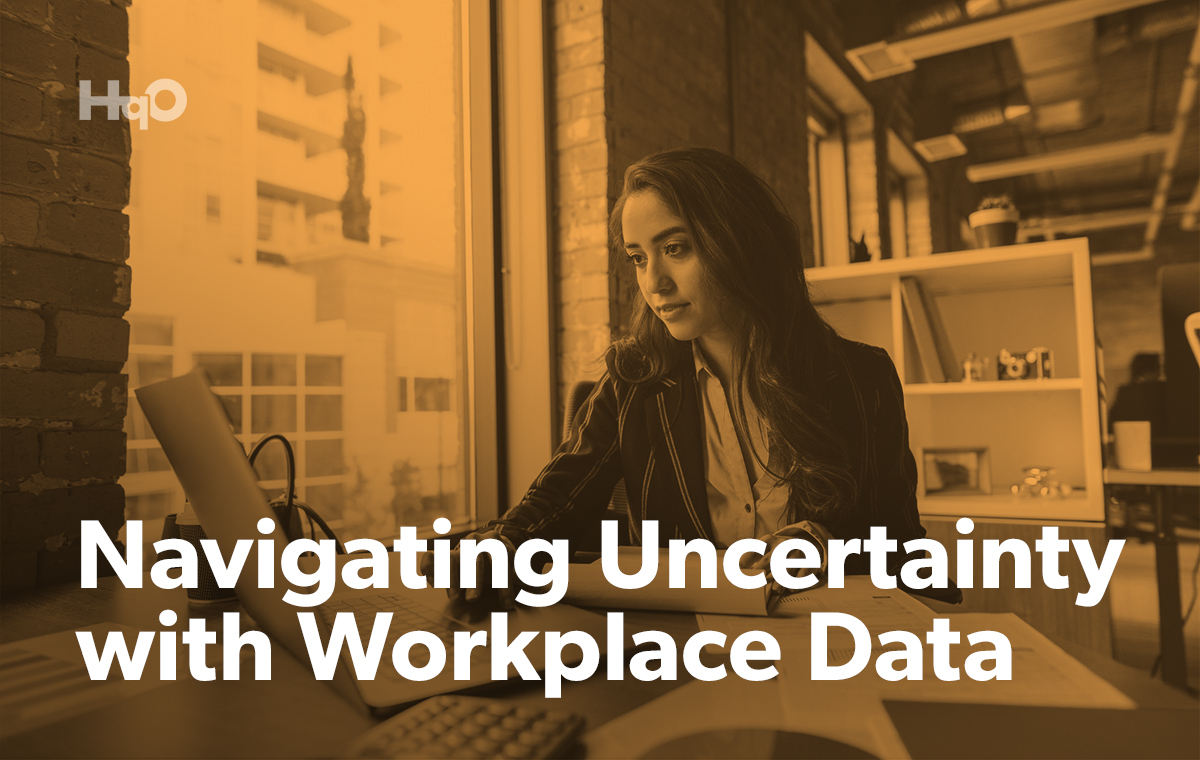According to the Federal Reserve Bank of Atlanta, the commercial real estate (CRE) space has now entered a period of what it calls “certain uncertainty,” which is driven by higher-than-healthy inflation, a chaotic labor market, and generally elevated levels of economic uncertainty. Moreover, in the face of endemic COVID-19, landlords and others in the CRE space have begun to accept the idea that rapid change and elevated levels of unpredictability may themselves be endemic to the market. “The future,” as the Harvard Business Review says, “will not be more stable or certain” than the past.
Data’s Role in the Workplace
Over the past few years, CRE landlords and property teams have proven themselves to be remarkably adept at navigating the many unprecedented challenges posed by the pandemic. Still, as landlords continue to adjust to a new economic environment — a “new normal” — that is defined by constant change, many are recognizing the need to become much more fluid in their business practices, both with regard to how they communicate with their tenants and with regard to how they understand tenant needs and behaviors.
Still, even in this period of constant change, research indicates that landlords are likely not communicating often enough with their tenants. According to HqO’s State of Workplace Experience report, for example, 72% of those surveyed say that they communicated with their tenant point of contact either only occasionally, or — in 12% of total cases — not at all. This points to a significant discrepancy at the heart of that report: while 88% of landlords surveyed say that they believe data on tenant preferences is important to their overall business strategies, very few of them are actively gathering this data in a proactive way, and communicating with their tenants with adequate frequency.
In the past, CRE companies and property teams had gathered information on tenant needs and desires by distributing a tenant annual survey to a small number of key tenant points of contact. While these surveys are still beneficial, landlords have begun to realize that the surveys may not be able to meet the growing demand for current and meaningful workplace experience data. Because tenant annual surveys are only given once a year, for example, they are only able to measure tenant needs at a single point in time. Moreover, because the survey generally only goes out to a small number of key contacts within a building, it may not generate comprehensive and timely data on the tenant experience, since it is rarely distributed to a large enough group of tenant employees. The survey also generally fails to measure space utilization and is unable to separate tenant sentiment (how tenants feel about their building) from actual tenant behavior.
More Consistent Insights
For these and other reasons, data from the State of Workplace Experience report shows that a growing number of landlords are looking to supplement annual surveys with the use of a building mobile app. As survey response data from the report indicates, this technology is quickly becoming indispensable to landlords because it provides them with automated, real-time information on tenant preferences and behaviors, which allows CRE companies and property teams to draft nimble business strategies that can easily meet the rapidly shifting demands of the market.
The app is also preferable to other data collection technologies because it allows landlords to solicit feedback from tenants and tenant employees throughout the year, in order to proactively monitor satisfaction, tailor investment strategies, and ultimately boost net operating income (NOI).
Interested in learning more? Download HqO’s Data Difference guide now to understand how data from a building mobile app can help you optimize your properties.



